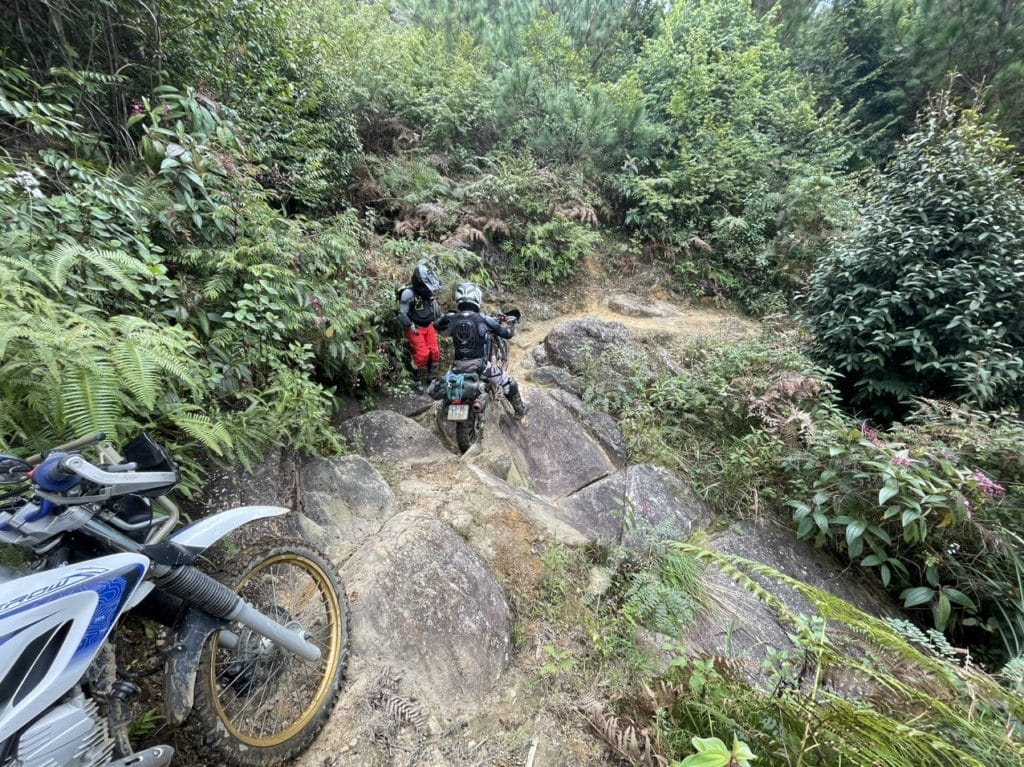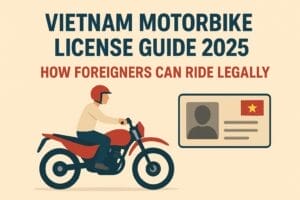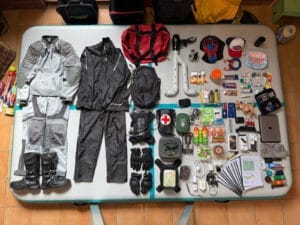Northwest Vietnam motorbike tour to Mai Chau, Ta Xua, Ngoc Chien, Sapa, & Thac Ba | Woods Family
There’s something undeniably alluring about the idea of riding your motorcycle through picturesque landscapes, venturing beyond borders, and experiencing the thrill of the open road. For those seeking an adventure like no other, a cross-border motorcycle journey from Vietnam to Laos promises to be an unforgettable experience. In this comprehensive guide, we’ll walk you through the ins and outs of making this thrilling trip a reality.

Chapter 1: Preparing for the Journey – Vietnam Motorbike Tours to Laos
Before you hit the road, it’s crucial to make the necessary preparations. From visa requirements to selecting the right motorcycle, here’s what you need to know:
1.1 Visa Requirements
First and foremost, you’ll need to ensure that you have the appropriate visas to enter both Vietnam and Laos. Visa requirements can vary based on your nationality, so it’s essential to check with the respective embassies or consulates for up-to-date information. Generally, tourists can obtain visas on arrival for both countries, but it’s best to confirm this before your journey.
1.2 Choosing the Right Motorcycle
Selecting the right motorcycle is a critical step. It’s recommended to use a reliable, well-maintained motorcycle with a robust engine for this journey. Many travelers prefer dirt bikes or dual-sport motorcycles, which are well-suited for varying terrains. Ensure your motorcycle is in top condition, with a thorough check-up and maintenance before you set out.
1.3 Necessary Documents
You’ll need to carry important documents with you, including your passport, motorcycle registration, and any relevant insurance papers. Make sure to keep photocopies and digital backups of these documents, just in case. Additionally, an International Driving Permit (IDP) is often required to legally ride in both Vietnam and Laos.
Chapter 2: Route Planning – Vietnam Motorbike Tours to Laos
Route planning is where the adventure begins. Let’s explore how to chart your course from Vietnam to Laos:
2.1 The Classic Route: Hanoi to Luang Prabang
One of the most popular routes for a cross-border motorcycle journey is from Hanoi, the capital of Vietnam, to Luang Prabang, a charming town in northern Laos. This route offers a blend of bustling cities and serene countryside.
2.2 Alternative Routes
If you’re seeking a more off-the-beaten-path adventure, consider alternative routes that will take you to less touristy areas. Options include starting from Hanoi and heading east towards Dien Bien Phu, then crossing the border to Muang Khua, Laos, and continuing southward.
2.3 Detailed Itinerary
Creating a detailed itinerary is crucial for a successful journey. Plan your stops, accommodation, and rest days. Take into account the road conditions, weather, and your riding capabilities when setting daily goals.
Chapter 3: Safety First
Safety should be your top priority on any motorcycle journey. Here are some safety tips to keep in mind:
3.1 Riding Gear
Invest in high-quality riding gear, including a DOT-approved helmet, riding jacket, pants, gloves, and riding boots. Proper gear will not only protect you in case of an accident but also shield you from the elements.
3.2 Motorcycle Maintenance
Regular maintenance is essential to ensure your motorcycle remains in good working condition throughout the journey. Pay attention to tire pressure, brakes, engine, and all vital components.
3.3 First Aid Kit
Carry a well-equipped first aid kit, which includes bandages, antiseptic, pain relievers, and any necessary prescription medications.
3.4 Emergency Contacts
Make a list of emergency contacts, including local authorities and the nearest embassies or consulates in case you need assistance.
3.5 Travel Insurance
Consider getting travel insurance that covers medical emergencies and motorcycle accidents. It’s a safety net that can provide peace of mind.
Chapter 4: Packing Essentials
When preparing for your cross-border motorcycle journey, packing wisely is a key element. Here’s a breakdown of what you should consider:
4.1 Clothing
Pack clothing suitable for different weather conditions, as the climate can vary along the route. Include rain gear, warm layers, and breathable garments for hot days. Don’t forget extra socks and underwear.
4.2 Camping Gear
If you plan to camp along the way, bring essential camping gear like a lightweight tent, sleeping bag, and cooking equipment. However, if you decide to take a guided trip through a travel agency, all your worries will be left behind
4.3 Tools and Spare Parts
Carry a basic toolkit for motorcycle repairs, as well as spare parts such as spark plugs, fuses, and a tire repair kit. These can save you in case of breakdowns.
4.4 Navigation
A reliable GPS device or a smartphone with an offline maps app is invaluable for navigation. Carry a paper map as a backup.
4.5 Personal Items
Don’t forget your toiletries, sunscreen, insect repellent, and any personal items you need.
Chapter 5: Crossing Borders – Vietnam Motorbike Tours to Laos
Crossing international borders with your motorcycle requires careful planning and adherence to regulations:
5.1 Border Crossings
Research the specific border crossings you’ll use and their operating hours. Some crossings may be closed on certain days, so plan your journey accordingly.
5.2 Entry and Exit Procedures
When approaching the border, follow the entry and exit procedures for each country. You may need to fill out customs and immigration forms, show your documents, and pay any required fees.
5.3 Import and Export Permits
Ensure you have the necessary permits to temporarily import and export your motorcycle. These documents typically include a “temporary vehicle importation” permit for both countries.
5.4 Customs Regulations
Familiarize yourself with customs regulations, as certain items, especially those subject to high taxes or duties, may need to be declared.
Chapter 6: Cultural Etiquette
Understanding and respecting local cultures is an essential part of a memorable journey:
6.1 Language
Learn some basic phrases in the local languages. This small effort can go a long way in fostering positive interactions with locals.
6.2 Dress Code
Respect dress codes, especially when visiting religious sites. In many parts of Laos, it’s appropriate to cover your shoulders and knees.
6.3 Local Customs
Be mindful of local customs and traditions. For example, it’s customary to remove your shoes when entering someone’s home in Laos.
Chapter 7: Accommodation and Dining
Accommodation and dining options can greatly enhance your journey:
7.1 Accommodation
From budget-friendly hostels to luxury resorts, you’ll find a range of accommodation options along your route. Booking in advance is advisable, especially during peak travel seasons.
7.2 Dining
Savor local cuisine by trying street food stalls, local restaurants, and traditional dishes. Food is an integral part of the cultural experience.
Chapter 8: Money Matters
Managing your finances during your journey is crucial. Here’s how to handle money while riding from Vietnam to Laos:
8.1 Currency Exchange
Both Vietnamese Dong and Laotian Kip are the primary currencies in their respective countries. It’s wise to carry some local currency, as well as US dollars, which are widely accepted for larger expenses.
8.2 ATMs
ATMs are readily available in.
———————————————————————————–
To get more details on many other Cross-Border Motorbike Tours from Vietnam to Laos, you can visit here. Otherwise, you can see more our best Vietnam Motorbike Tours and Laos Motorbike Tours.
Of course, you can also follow us at this following youtube channel to see what we’re doing for our guests:
https://www.youtube.com/@indochinamotorbiketours






